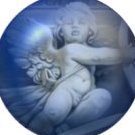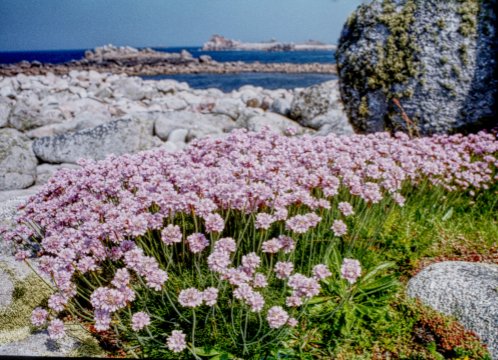-
Posts
332 -
Joined
-
Last visited
Everything posted by ms.fuentecilla
-

Affinity 2 exe files
ms.fuentecilla replied to ms.fuentecilla's topic in Feedback for the Affinity V2 Suite of Products
Quite simply they are unable to find it. Most of the time now I work with other software. I find this preferable to prepare as much as possible within the flexibilities of RAW and often it leaves very little needed in Photo, so my main Affinity use now is Publisher. When I try to direct software to the aflaunch helper it is refused access. An interesting question: How can someone participating in a discussion be a non participating member? Not intended to be in any way sarcastic or aggressive but curious. Another edit. Having now read the thread you linked I'm afraid I am baffled by the jargon: unsandboxed; sandboxed -

Affinity 2 exe files
ms.fuentecilla posted a topic in Feedback for the Affinity V2 Suite of Products
Are you intending to make the exe files for the suite visible any time soon please? It is rather tedious to have to save to disk from other software before working in Affinity! -
Hello Revisiting some of my archive and revising using Photo v2 makes it vividly apparent just how much this software has been honed. This is especially noticeable in the panorama facility, always good but which is now seemingly flawless. Things that caused problems in 2019 go through with ease, the results appearing to be a high quality single image. This is not due to my improved skills but the care taken with the algorithms.
-
In the filters panel or the filters switch in the layers panel it is possible to choose from a wide range of blur types, like motion blur, radial blur and so on. This doesn't appear to be possible with the blur tool. For that it seems one can choose only a variety of brush textures. Is there any probability that these other blur types might also be made a feature of the blur tool? Or is that too complex an issue? My question probably arises through ignorance of encoding!
-
Hello My RAW files are pre-processed to some extent in PhotoLab6 and exported either to disk or to AP as linear RAW (DXO). This includes lens distortion corrections. When opened in AP it is then not possible to make a geometric correction like horizontal and then scale if the AP lens correction is switched off. If the AP lens correction remains it is of course exaggerated by having been applied twice and gives weird results. Is scaling necessarily an adjunct to lens distortion correction or would it be possible to make them independent? I appreciate that you are all extremely busy and that this is a minor problem associated with external software and also probably I could exclude lens distortion correction from PhotoLab since final processing is always through AP. The videos for AP2 are really excellent. Thoroughly professional. Michael
-
Good morning There is a problem throughout the filters and adjustments with the 'colour burn' option. I attach a screen shot. This happens with any adjustment when this option is applied. I use it for special effects. Michael
-

Resizing selections; inpaint brush
ms.fuentecilla replied to ms.fuentecilla's topic in V2 Bugs found on Windows
Thank you Dan C. I fully understand the situation about the pressures and further exploration brought me to what you suggest, resulting in a successful photo book. The video tutorials are a good start because I had missed so many of the improvements. Will printed manuals also be produced or were the earlier ones not successful? Michael -
Hello two things. There is some very weird behaviour of the inpaint brush tool in photo. It sometimes erratically paints vast areas of an image red, though ultimately it does what is requested. In Publisher a selected image or group of images does not scale up proportionally when using the control or shift keys with a mouse.
-
Is there a way of finding the original source of an image used in Publisher? That should be possible
-
My beta directs me to here for an update, but where is it please?
-
It is there. The titles of the images seem to have disappeared, which is confusing also to me. It is the middle one of the three images but here it is again. I had sent examples to the DxO support and they told me to be patient, they were working on it. I don't know how much companies talk to each other about such things. No, I am using Windows 10. Mac was no good to me in my mid period computer graphic days because it couldn't handle 3D animations so I stuck with MS as there was so much research simulation work to do at that time exploring Greek sanctuary design and practice. _6022961-ORF_DxO_DeepPRIME.dng
-
Hello MEB The files are first processed in DxO Pure Raw2. These are then saved as RAW files to maintain flexibility. The saved files are then opened in Photo. In Photo I either try to reduce exposure or to use the highlights/shadows dialogue to reduce highlights. The magenta occurs in the highlight zones when I operate the sliders for those. If I do the same with the original RAW files from my cameras in Photo without the intervention of DxO this is usually a successful procedure. It is the way Pure Raw handles noise and sharpness that attracts me. In particular it makes rather inferior quality images from my Olympus TG6 (poor sensor?) more acceptable but it is sometimes also good with the Sony6300 ARW. I produced some samples to send to DxO and will try to find them; if that fails I can repeat the procedure and post them. They tend to be largish! Sorry I failed to mention that this was a RAW issue but thought it unnecessary because Pure Raw will only accept RAW files! Thank you for your response Michael
-
Does anyone else out there use DxO with Photo? If so do you know why, in high contrast situations, DxO converts whites to magenta? I have passed the problem on to DxO but so far there is no solution. In normal contrast situations it cooperates brilliantly so I would like to use it more. I have asked DxO if this occurs with other photo processing software but had no reply to that question. It seems optimised for Lightwave.
-
Hello NotmyFault Whatever your fault might not be ... I want stacked shots of moving water to blur only the water and not its surroundings. Too much wind movement in the surrounding areas makes for an unpleasing image, so I would have liked to keep one of the 20 or so stacked images sharp with only the water 'moving'. It had occurred to me that someone else might have found a way of creating a mask to exclude those parts of all except the water. The subject is usually a waterfall. I sometimes use stacking for this kind of illusion. Focus stacking is something else as is Grandaddy's, which can also be interesting.
-
Hello I would like to mask stacks to exclude some areas. I tried using quick mask but it proved impossible to either erase or paint using the paint tool. Am I seeking the impossible/improbable or is there a way to do this? The kind of stacking is to imitate movement but exclude some areas from the stack using only one of the stack group.
-
Hello john It was indeed St Agnes, one of hundreds from the islands. And yes, the second image is the original scan. Since uploading this I have realised that I shouldn't specify a new dpi, which I did at 400 but specify an actual pixel count. Is that what you would say? I have also learned to use the scan software much better, (These were among the first.) together with post processing in Affinity Photo. To begin with I scanned to TIF but there was no perceptual improvement over quality JPEGS. Sadly the original transparencies have to be disposed of (that hurts!) because my daughter (also a photographer) has no space to inherit them, so I am attempting a digital archive for her of which these are a small but very important part. Thank you for your reply. Michael
-
I am busy digitising a large slide archive by scanning. The scans are saved at 4800dpi. Normal digital images at that resolution will resize with little if any visible deterioration. However, if I attempt to downsize a scan it pixelates into a total mess. The images are JPEGs. Apart from rescanning at a lower resolution is there a way using AP to avoid pixelation to this extent? Does anybody out there have experience of this please?
-
These are very interesting replies, in that I tried also using Libre Office pdf. And thank you very much for identifying the software used to create the original pdf's. Although very experienced in using windows computers (from 1987) I am also a bit long in the tooth. Presumably then these pdf's were created in Mac, but that should make no difference, should it. Until Affinity are back at work there is little that can be achieved, or so I feel, because from these last valuable responses it would seem a limitation in software compatibility and I also have another issue with Publisher on hold. Walt: Context toolbar is set permanently on as it is necessary for all my uses of Publisher. The total pdf appears but it is impossible to select pages and place them. Selection produces only the title page no matter where I click. David: I tried this but it doesn't seem to differ from trying to place individual pages.
-
EMRECS: I just want to enlarge parts supplied in a pdf folder for rehearsal so that I can read them more easily, in short to print them larger on each page. So I just need the original opened as an image in any Affinity programme. Quite simple. If I try file place, Walt, only one page (the title) is placed not all pages contained in the pdf file, which I might have expected. Pass through mode seems not available as part of any menu I can find. Editing pdf in Affinity is new to me, so I am really searching! What I mean by gibberish is one symbol repeated on the staves without any resemblance to musical notation, suggesting your comment about the need for fonts perhaps. I don't know what software was used to make the pdf's. The only way I have been able to do anything so far is by printing from Acrobat in the original pdf and reducing the printer's margin setting. Bit frustrating. It perhaps reveals a limitation in Affinity handling of pdf format and a limitation in my knowledge of pdf. Thank you for your replies. I shall keep trying because I have to learn this music for a performance! Happy New Year Michael Wienerwald.complete.pdf










